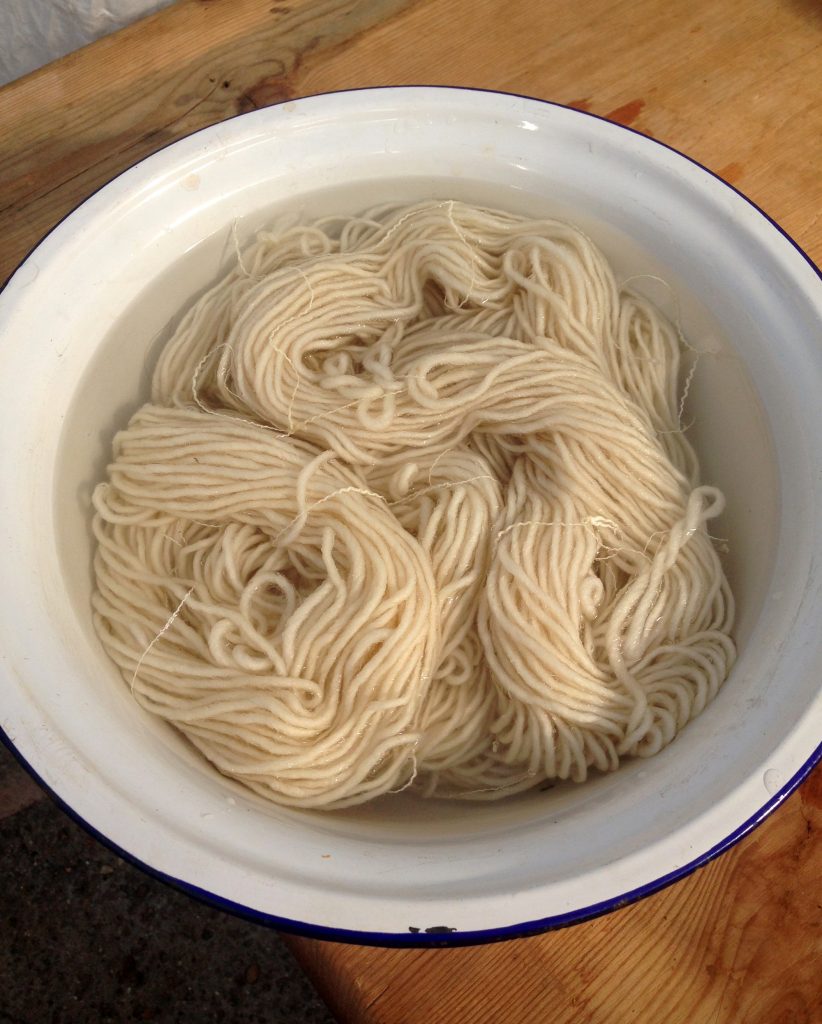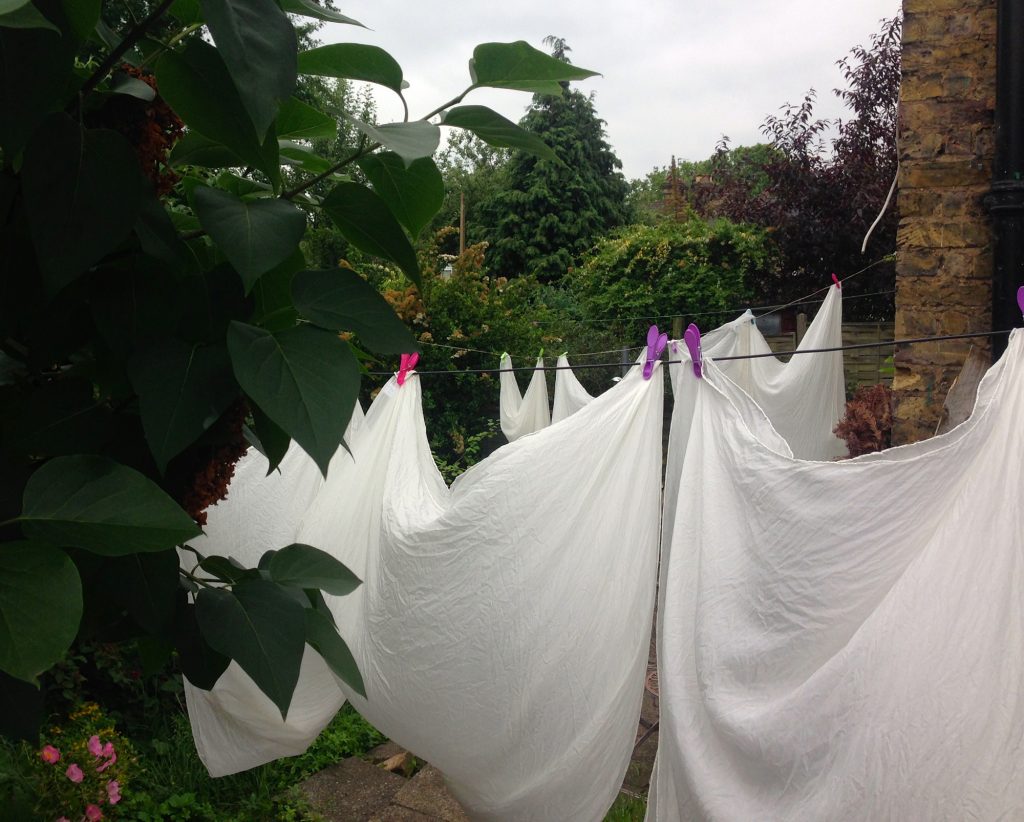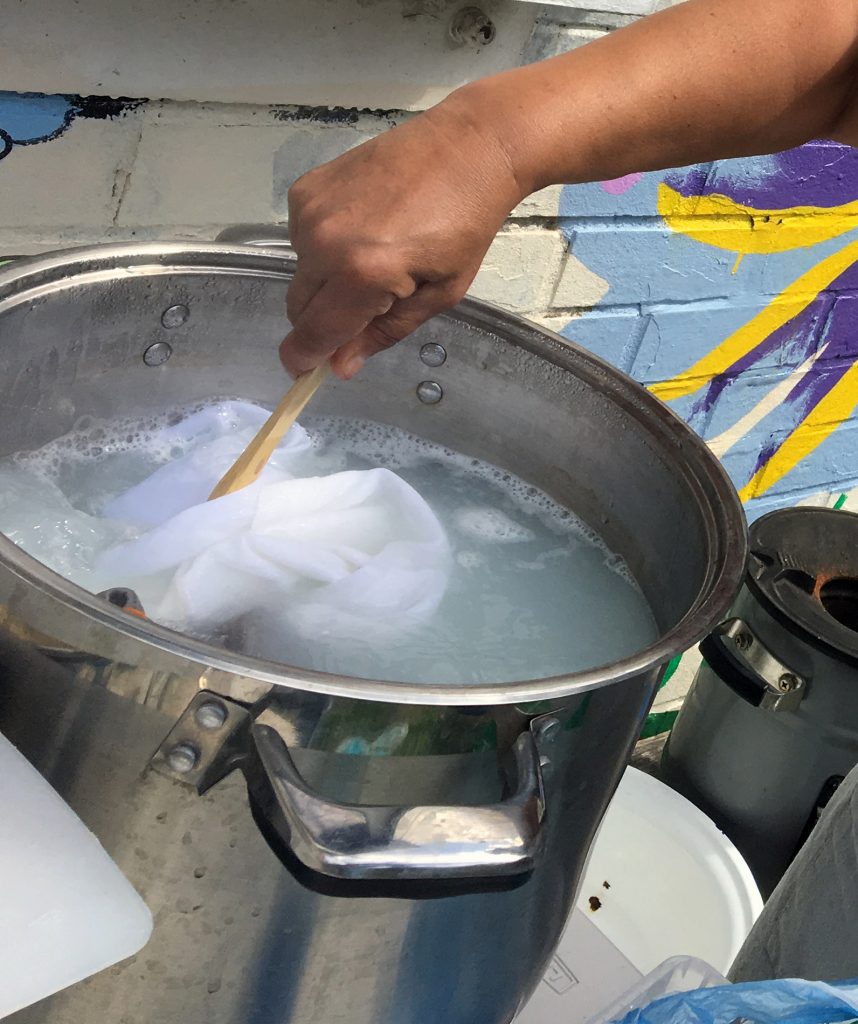Scouring is the process of removing any sizing, grease or dirt from fibres in order to improve the amount and even uptake of the dye. Fibres are very diverse (link to the Fibres page under Resources) and need slightly different processes to get fibers ready for dyeing.
General considerations when scouring
- Always wet fibres beforehand for at least 5 minutes or until you are sure they are thoroughly wetted, especially if tightly woven fabric. Allow at least an hour for wool; some would even say that an overnight soak is best. Wool fibres are water repellent to start with, yet, once wet, they hold on to the water equally strongly and will need longer time for drying than other fibres.
- When placing fibres in the water detergent, changing, or rinsing out, is best to use same water temperature, especially with protein fibres. This is particularly important for wool, as a sudden change will cause it to felt – that’s ok when intentional. : )
- Scouring fibres can get ‘tangly’ – best keep them in a mesh bag, tie yarn in skeins with thin yarn ties, and if it woven fabric, make sure the pieces are unfolded and can move freely in the pot.
- Use a ratio of about 4 litres of water to 100 gr of fibre.
- Stir detergent and washing soda first in some warm water until they are well dissolved, before placing on the large pot with water to match the temperature of your fibres from your soaking bath.
- After finishing, if water gets looks brown is best to have a second go with new ingredients.
- Rinse out all soap suds until the water runs out clear.
- Fibres can either be kept dry in store for future use, or mordanted (link to Mordanting page under page Resources ) straight away, or dyeing (link to Dyeing page under page Recources) – if mordanting isn’t needed.
- When working with vegetable fibres, some people keep it simple and wash their fabric in the washing machine in hot water with soda ash. And added benefit when using the washing machine is that it will clean its interior very nicely.



